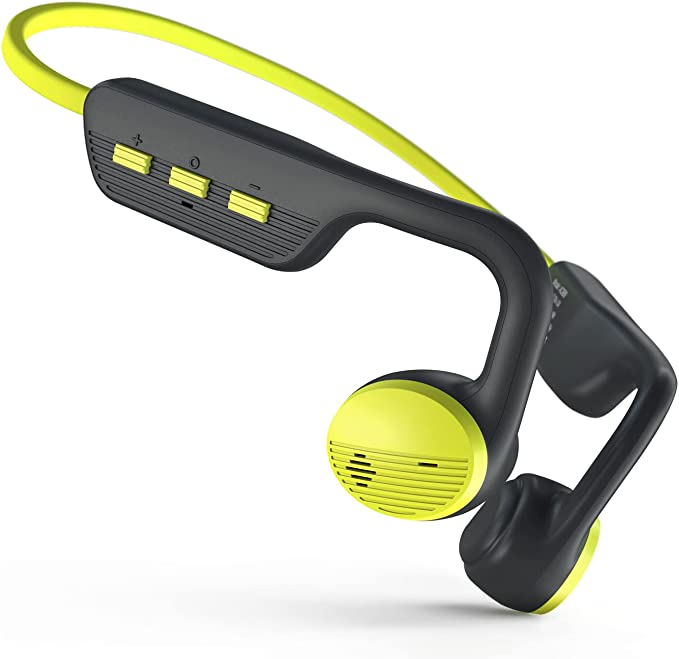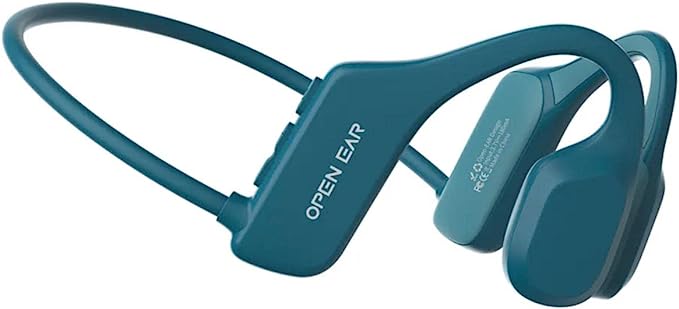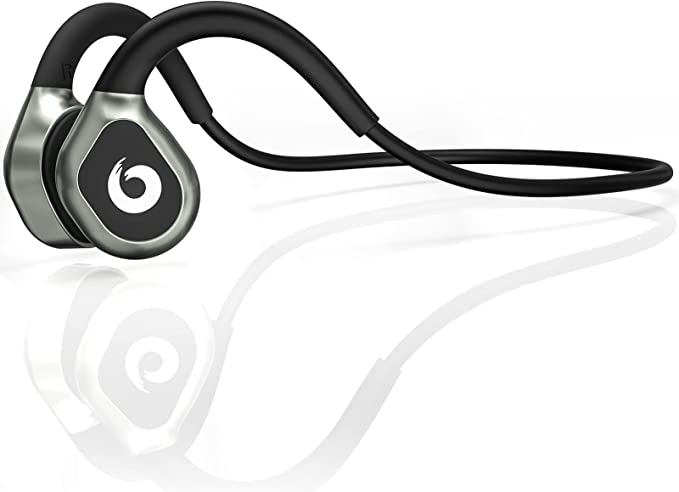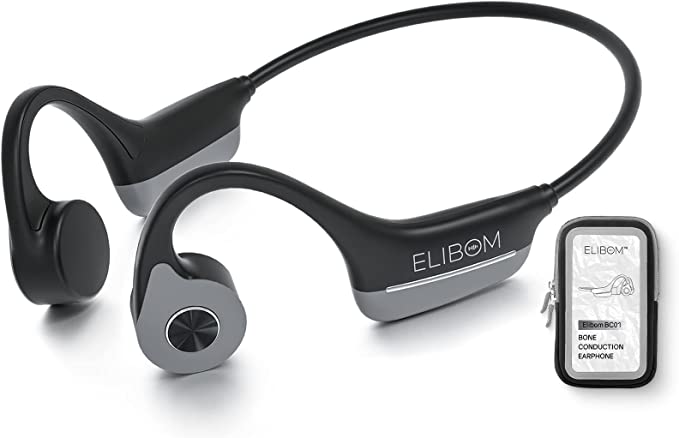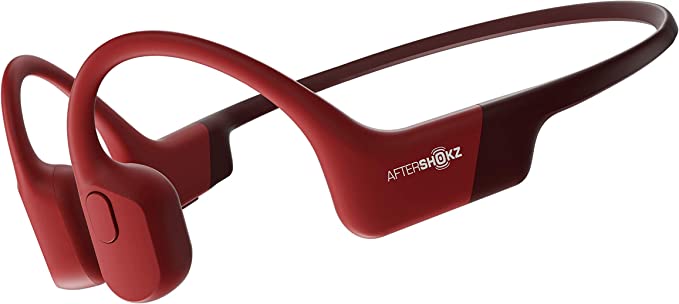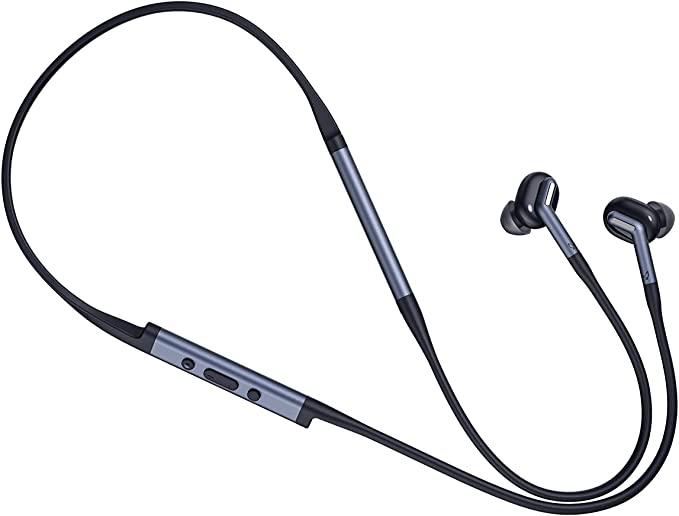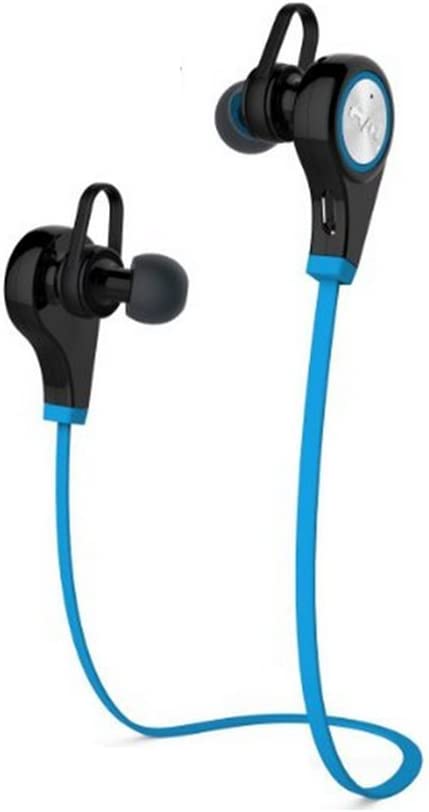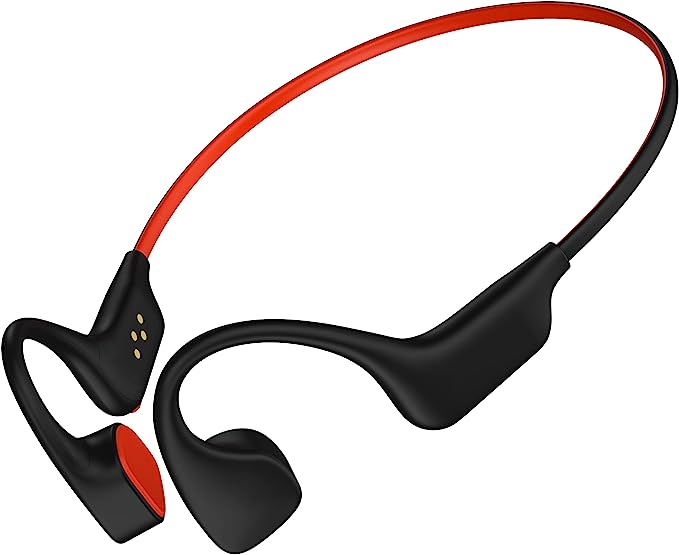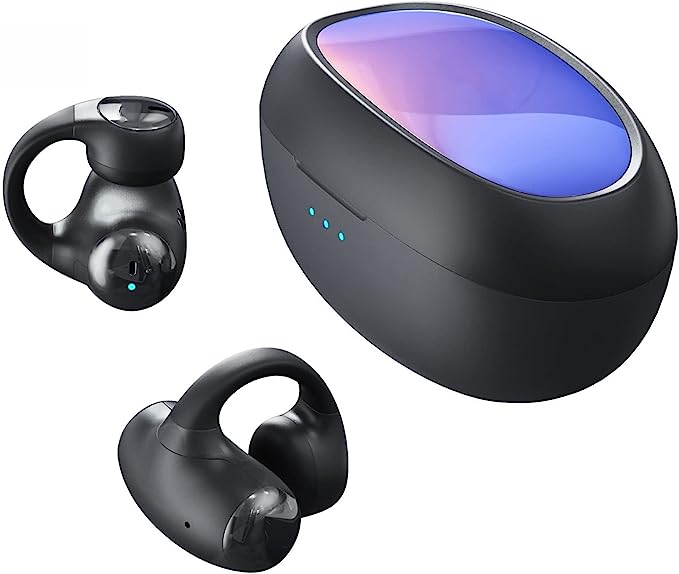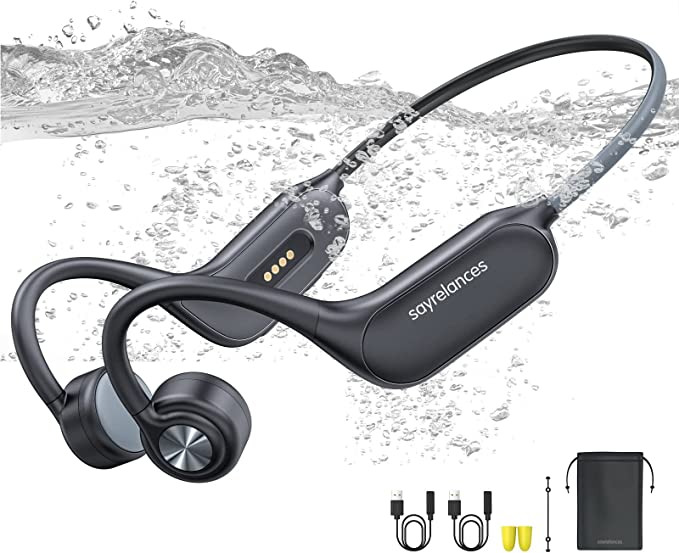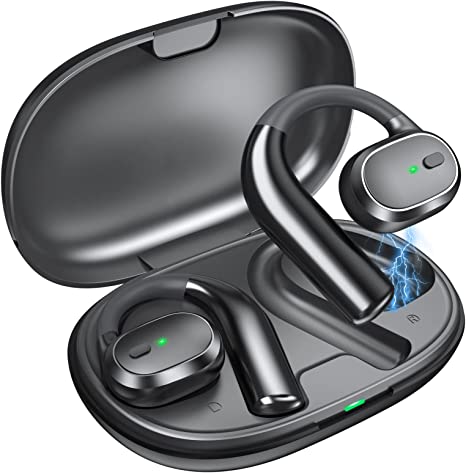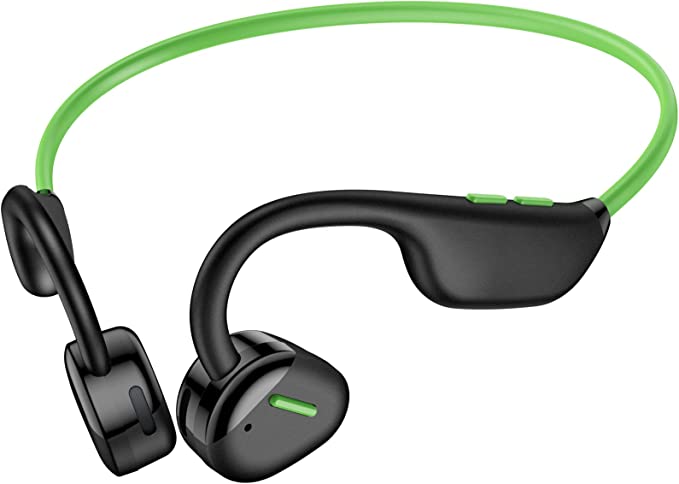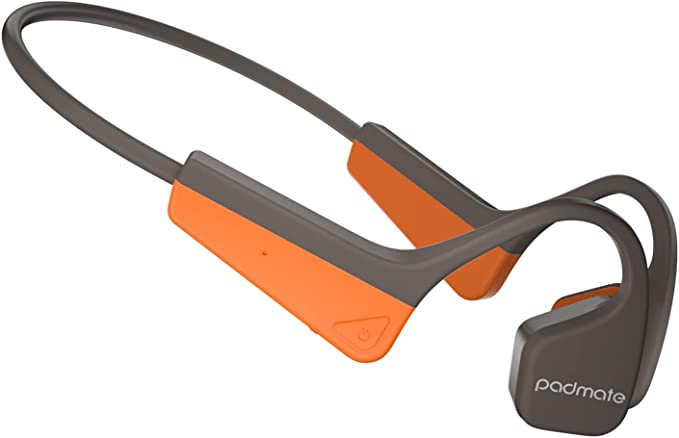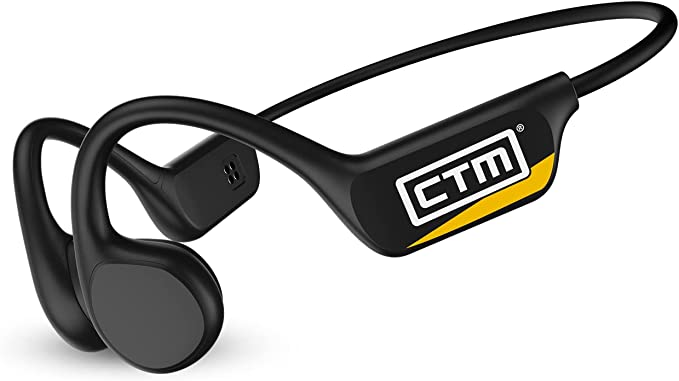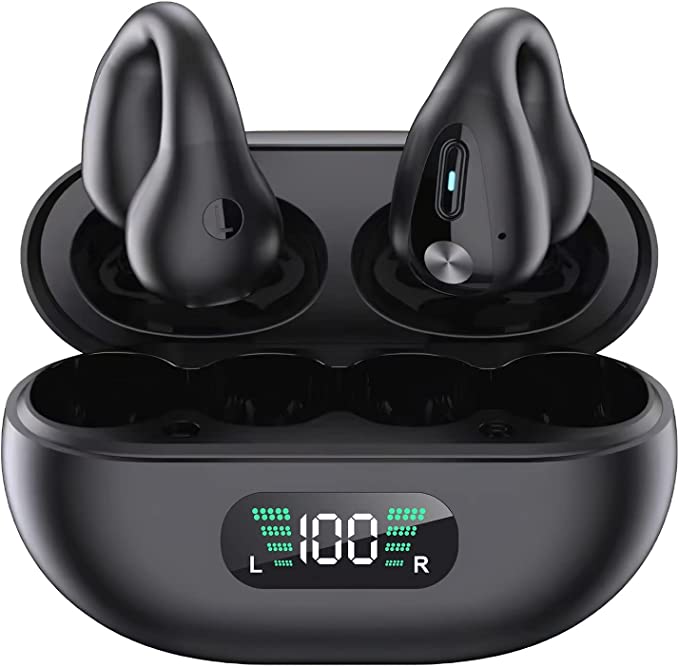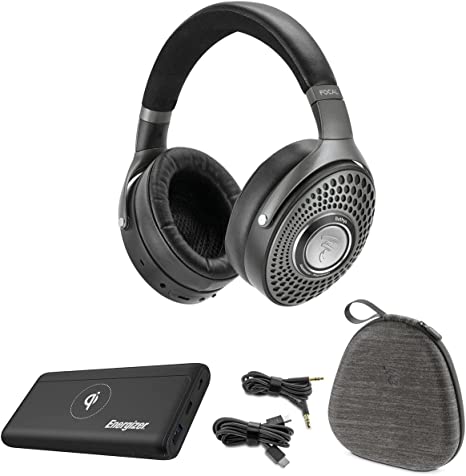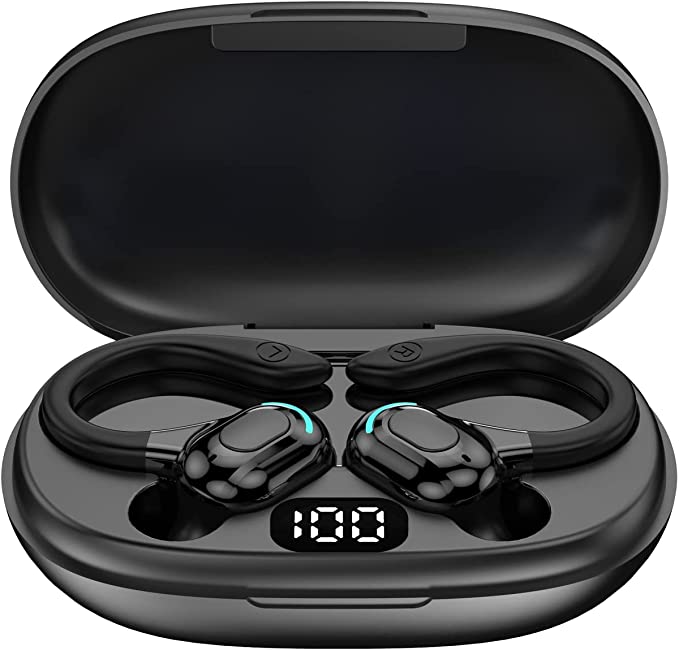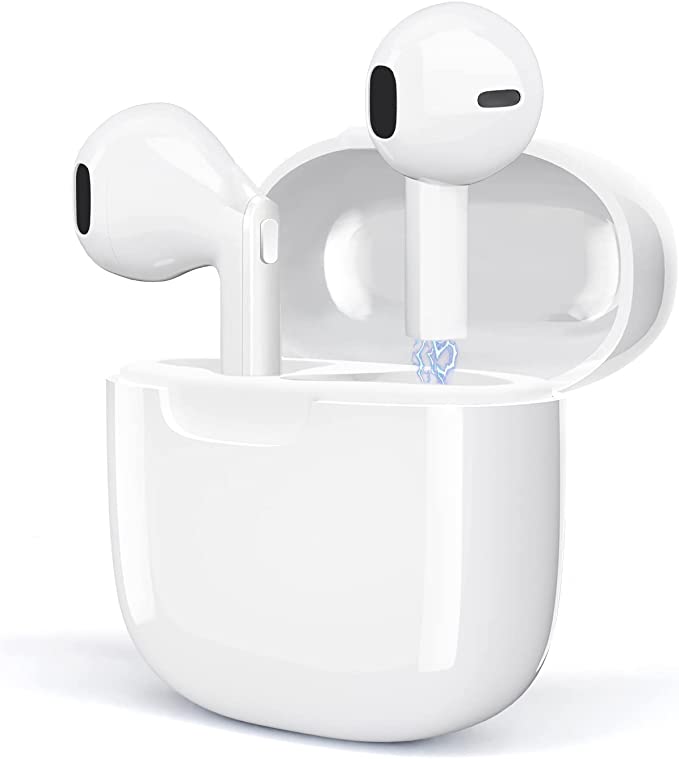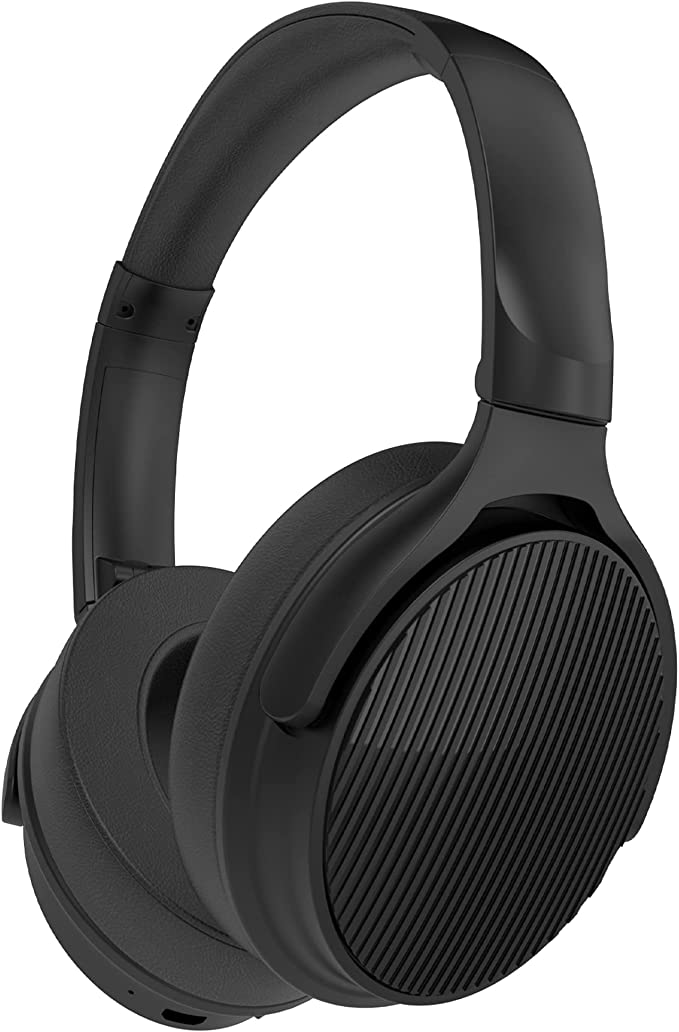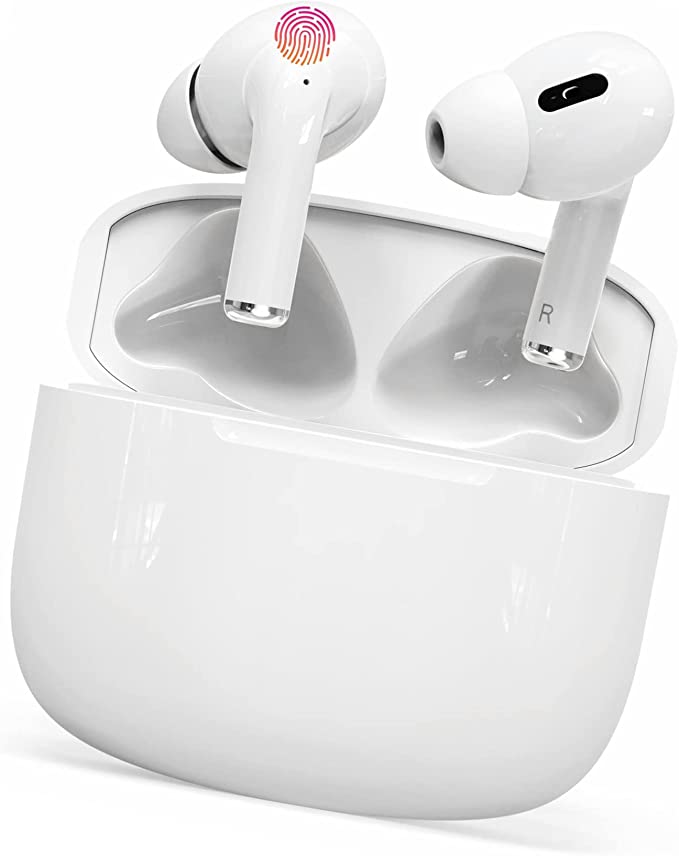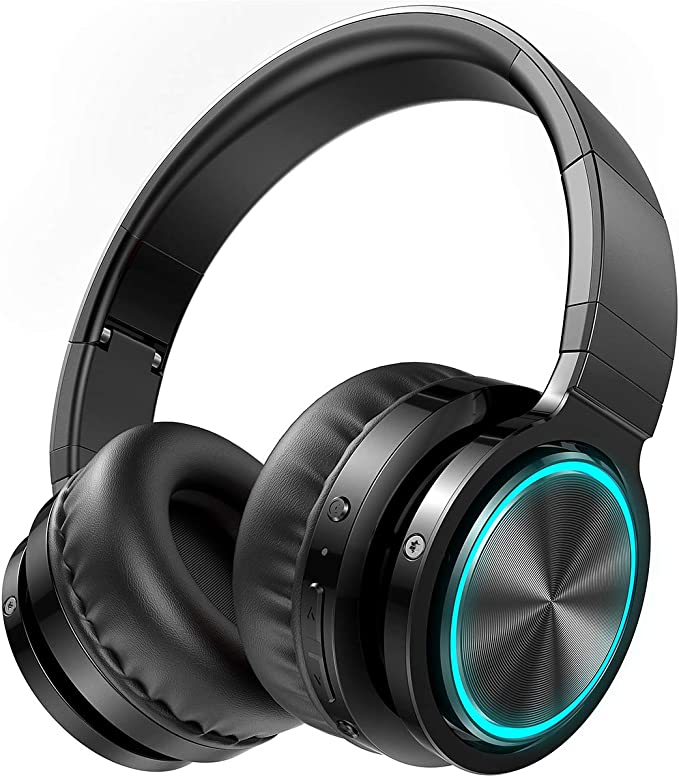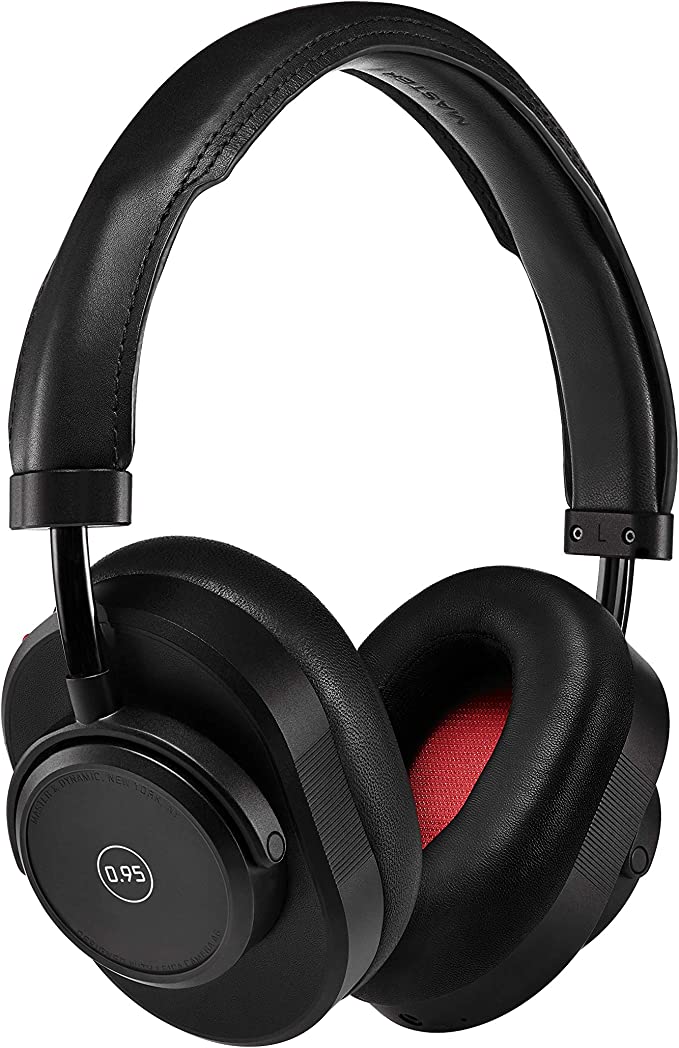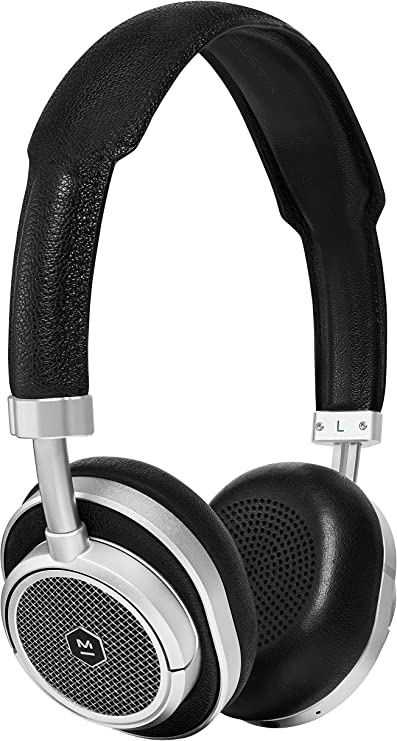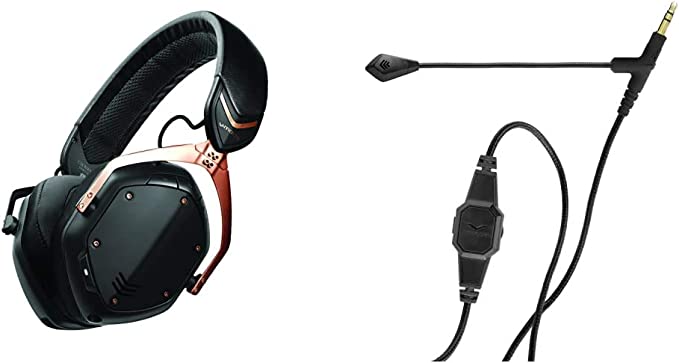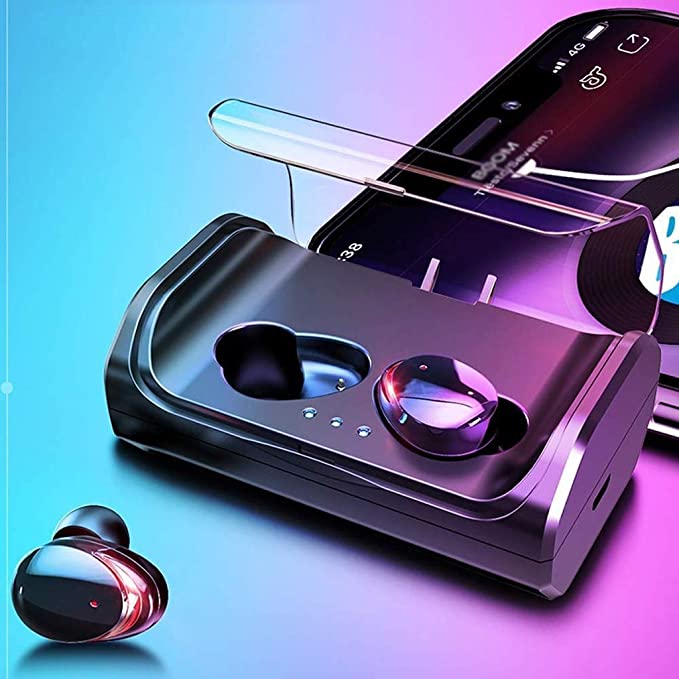YouthWhisper Bone Conduction Headphones: Hear Sound, Stay Aware
Update on March 21, 2025, 4:55 a.m.
Imagine running along a busy street, your favorite music pumping, yet you’re still fully aware of the approaching car horn or the friendly greeting of a fellow jogger. This might sound like a contradiction, but it’s the reality offered by bone conduction technology. Instead of blocking out the world, bone conduction headphones let you hear through it, offering a unique and safer way to experience audio. But how is this even possible? The answer lies in a fascinating journey into the science of sound and the remarkable capabilities of the human body.
What is Sound, Anyway?
Before we dive into bone conduction, let’s get back to basics. What is sound? Simply put, sound is vibration. When an object vibrates – a guitar string, a drumhead, or even your vocal cords – it creates pressure waves in the surrounding medium, usually air. These waves travel outward, like ripples in a pond, and when they reach our ears, we perceive them as sound. The frequency of these vibrations, measured in Hertz (Hz), determines the pitch of the sound. High-frequency vibrations create high-pitched sounds (like a whistle), while low-frequency vibrations create low-pitched sounds (like a bass drum). The amplitude (or intensity) of the vibrations determines the loudness of the sound.
The Amazing Human Ear: A Biological Masterpiece
Our ears are incredibly complex organs, designed to capture these vibrations and translate them into electrical signals that our brains can interpret. The process typically begins in the outer ear, which funnels sound waves into the ear canal. These waves then hit the eardrum (tympanic membrane), causing it to vibrate.
These vibrations are amplified by three tiny bones in the middle ear – the malleus, incus, and stapes (also known as the hammer, anvil, and stirrup). These bones act as a lever system, transmitting the vibrations to the inner ear, specifically to a fluid-filled, snail-shaped structure called the cochlea.
Inside the cochlea are thousands of tiny hair cells. These hair cells are tuned to different frequencies, and as the fluid in the cochlea vibrates, they move. This movement triggers the release of neurotransmitters, which generate electrical signals that travel along the auditory nerve to the brain. It’s in the brain that these electrical signals are finally interpreted as sound – music, speech, or the rustling of leaves.

Beyond the Eardrum: Introducing Bone Conduction
Here’s where things get interesting. While the process described above is how we typically hear, it’s not the only way. Bone conduction provides an alternative pathway for sound vibrations to reach the inner ear, bypassing the outer and middle ear entirely.
Instead of traveling through the air and vibrating the eardrum, bone conduction technology transmits sound vibrations directly through the bones of the skull. These vibrations travel to the cochlea, stimulating the hair cells in the same way as air-conducted sound. You’re actually experiencing a form of bone conduction right now! When you speak, you hear your own voice partly through air conduction (sound waves traveling from your mouth to your ears) and partly through bone conduction (vibrations traveling through your skull).
A Journey Through Time: The History of Bone Conduction
Bone conduction isn’t a newfangled invention. Its roots go back centuries. One of the earliest documented uses of bone conduction dates back to the 16th century, with Girolamo Capivaccio, an Italian physician, who used a metal rod connected between teeth to help diagnose hearing problems.
In the 18th and 19th centuries, inventors explored various bone conduction devices, including “hearing fans” and “dentaphones” that were held against the teeth. Perhaps the most famous early beneficiary of bone conduction was Ludwig van Beethoven, the renowned composer who began to lose his hearing in his late 20s. Beethoven reportedly used a rod attached to his piano, which he would clench between his teeth, allowing him to perceive the vibrations of the music through his jawbone.
The 20th century saw significant advancements in bone conduction technology, primarily driven by the development of hearing aids. Bone conduction hearing aids were (and still are) particularly useful for individuals with conductive hearing loss, a condition where sound transmission through the outer or middle ear is impaired. These devices bypass the damaged parts of the ear, delivering sound directly to the cochlea.

Open Ears, Open World: The Benefits of Bone Conduction
So, why choose bone conduction headphones over traditional ones? The advantages are numerous:
-
Situational Awareness: This is arguably the biggest selling point. Because your ear canals remain open, you can hear ambient sounds alongside your audio. This is crucial for safety, especially during outdoor activities like running, cycling, or walking in busy areas. You can enjoy your music or podcast while remaining aware of traffic, conversations, and other potential hazards.
-
Enhanced Comfort: Many people find bone conduction headphones more comfortable than traditional earbuds or over-ear headphones, especially for extended use. There’s no pressure on the eardrum or inside the ear canal, which can be a major relief for those who experience discomfort with in-ear buds. The lightweight design, often featuring a flexible titanium frame (as seen in the YouthWhisper headphones), further enhances comfort.

-
Hygiene and Ear Health: Because nothing is inserted into your ear canal, bone conduction headphones can be more hygienic. There’s less risk of trapping moisture and bacteria, which can contribute to ear infections. This is a significant benefit for athletes who sweat during workouts.
-
Accessibility for Certain Hearing Conditions: As mentioned earlier, bone conduction can be a viable option for individuals with certain types of hearing loss, such as conductive hearing loss or single-sided deafness. However, it’s crucial to consult with an audiologist to determine if bone conduction is appropriate for a specific condition.
YouthWhisper: Bringing Bone Conduction to Your Life
The YouthWhisper Bone Conduction Headphones exemplify the benefits of this technology, offering a blend of safety, comfort, and practicality. While a specific model number isn’t provided (suggesting this is a bundle package), the listed features highlight its key strengths.
Design and Comfort
The YouthWhisper headphones utilize a lightweight, open-ear design. The flexible titanium headband wraps around the back of the head, ensuring a secure and comfortable fit. Titanium is an ideal material for this application due to its exceptional strength-to-weight ratio, durability, and biocompatibility (meaning it’s unlikely to cause skin irritation). The open-ear design eliminates the pressure and potential discomfort associated with traditional earbuds, making them suitable for long listening sessions.
IP Rating: Ready for Your Workout
The IP54 rating signifies that the YouthWhisper headphones are protected against dust ingress (limited protection) and water splashes from any direction. This makes them sweatproof and resistant to light rain, perfect for workouts and outdoor activities. While not fully waterproof (you shouldn’t submerge them), the IP54 rating provides ample protection for most everyday situations. To clarify, the “5” in IP54 refers to dust protection, indicating that while dust can enter, it won’t interfere with the satisfactory operation of the equipment. The “4” refers to water protection, meaning the headphones can withstand water splashes from any direction.
Connectivity and Battery
The YouthWhisper headphones connect wirelessly to your devices via Bluetooth, providing a stable and convenient connection. The advertised battery life is impressive: up to 6 hours of continuous music playback, 8 hours of phone calls, and a remarkable 480 hours (20 days) of standby time. A 2-hour charging time is fairly standard for wireless headphones. This long battery life minimizes the need for frequent charging, making them a reliable companion for daily use.
Bone Conduction vs. Traditional Headphones: A Comparison
| Feature | Bone Conduction Headphones | Traditional Headphones (In-Ear/Over-Ear) |
|---|---|---|
| Sound Transmission | Through skull bones | Through air and eardrum |
| Situational Awareness | Excellent | Limited (can be improved with transparency modes) |
| Comfort | Generally very good | Varies greatly depending on design |
| Hygiene | Excellent | Can be a concern with in-ear buds |
| Hearing Health | Generally safer for hearing | Potential for hearing damage at high volumes |
| Sound Quality | Good, but typically not as rich as high-end traditional headphones | Can range from poor to excellent |
| Leakage | Present, but minimized in newer models | Minimal in most models |
| Use Cases | Sports, outdoor activities, commuting, open office environments | General listening, noise isolation |
It’s important to note that while bone conduction headphones offer distinct advantages, they might not be the best choice for every situation. If you prioritize absolute sound quality and noise isolation above all else (for example, in a noisy environment like a plane), high-quality traditional headphones might be a better option. However, if situational awareness, comfort, and ear health are paramount, bone conduction headphones, like the YouthWhisper, are a compelling alternative.
The Future of Hearing: What’s Next for Bone Conduction?
Bone conduction technology is continually evolving. Researchers and engineers are working to improve sound quality, reduce sound leakage, and enhance overall performance. Some areas of development include:
- Improved Transducers: New transducer designs aim to deliver a wider frequency response and richer bass, addressing one of the traditional limitations of bone conduction.
- Leakage Reduction: Advanced techniques are being developed to minimize sound leakage, making bone conduction headphones more private.
- Miniaturization: Further miniaturization could lead to even more discreet and comfortable bone conduction devices.
- Integration with Other Technologies: We might see bone conduction integrated with other wearable technologies, such as smart glasses or augmented reality (AR) devices.
- AI-Powered Features: Artificial intelligence could be used to enhance sound quality, personalize the listening experience, and even provide real-time noise cancellation (while still maintaining situational awareness).
Debunk Common Myths
- Myth: Bone conduction is harmful to your bones.
- Fact: The vibrations used in bone conduction headphones are very low-intensity and pose no risk to your skull bones.
- Myth: Bone conduction headphones sound terrible.
- Fact: While the sound signature is different from traditional headphones, the quality has significantly improved in recent years, and many users find it perfectly enjoyable.
- Myth: Bone conduction headphones are only for people with hearing loss.
- Fact: While they can be beneficial for some types of hearing loss, they are also a great option for anyone who wants to maintain situational awareness while listening to audio.
- Myth: Bone conduction can be used underwater.
- Fact: While some bone conduction headphones are waterproof, bone conduction itself is less effective underwater because water dampens the vibrations. Specialized underwater bone conduction headphones exist, but they often use different technology.
Bone conduction technology represents a significant shift in how we can experience audio. By embracing the natural capabilities of our bodies, it offers a unique blend of sound and awareness, opening up new possibilities for how we interact with the world around us. The YouthWhisper Bone Conduction Headphones, with their focus on comfort, safety, and practicality, are a testament to the advancements in this exciting field.
